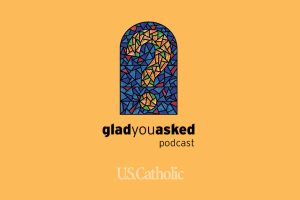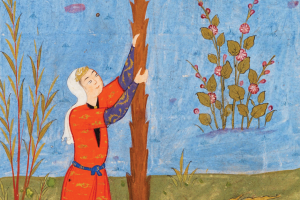As we’re reminded every Advent, our Catholic Christmas customs are somewhat at odds with the secular “holiday season,” which starts before Thanksgiving and goes on until the last college bowl game. But even though we Catholics wait a bit to get going, we have a similarly long season of celebration, of which the “12 days,” made famous by a certain 12-verse carol, are but a piece.
The 12 days themselves are simply the time between the two major Christmas feasts: the Nativity of the Lord on December 25 and Epiphany on January 6. Since Christmas was the major “birth” feast in the ancient Western churches and Epiphany was the biggie for the Eastern churches, the days between them inevitably gained significance. The exact origins of particular observances and festivals, though, are a little harder to nail down.
Like many Christian festivals, the roots of the Christmas season can be found in pre-Christian religions and folk customs. The date of Christmas, for example, is likely connected to an ancient multi-day Roman feast related to the winter solstice. The “12 days” are probably an adaptation of the pre-Christian winter festivals of northern Europe, “Yule” among them. These celebrations helped ancient Europeans get through the longest nights of winter.
Ancient Christians found a happy coincidence between these festivals that sought the sun’s return and the birth of the “Light of the world.” Pagan festivals became Christian festivals, with many traditions remaining intact. Yule logs and lighted trees, holding off the seemingly endless night, are examples of such adaptations. Sometimes, though, to tone down the partying, some local bishops tried to institute fast days, especially just after the New Year, to stamp out pagan practice.
The Christmas carol comes from 16th-century Europe. But the 12 days are really only part of our Christmas observance, which also includes important feast days in honor of Stephen, the first martyr (December 26); John the evangelist (December 27); and the Holy Innocents, the infants slain by King Herod (December 28, Matt. 2:16–18). These are known as the comites Christi, “companions of Christ,” because their lives gave unique witness to Jesus through martyrdom (Stephen and the Innocents) and the written word (John).
Other Christmas feasts include the Holy Family (Sunday after Christmas) and Mary, Mother of God (January 1). The liturgical season of Christmas ends with the feast of the Lord’s Baptism (Sunday after Epiphany).
Unfortunately, like the 50 days of Easter joy that we often forget after a rigorous 40 days of Lenten fasting (notice which is longer!), our Christmas party often ends too early. But though we wait a bit to get our holy days going, they carry us far beyond the Orange Bowl. So don’t eat all the cookies on Christmas Day!
This article appeared in the December 2005 issue of U.S. Catholic (Vol. 70, No. 12, page 45).
Image: Flickr cc via Waiting For The Word












Add comment